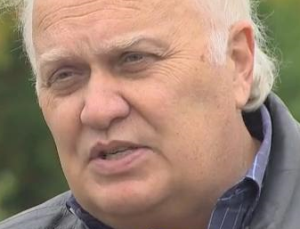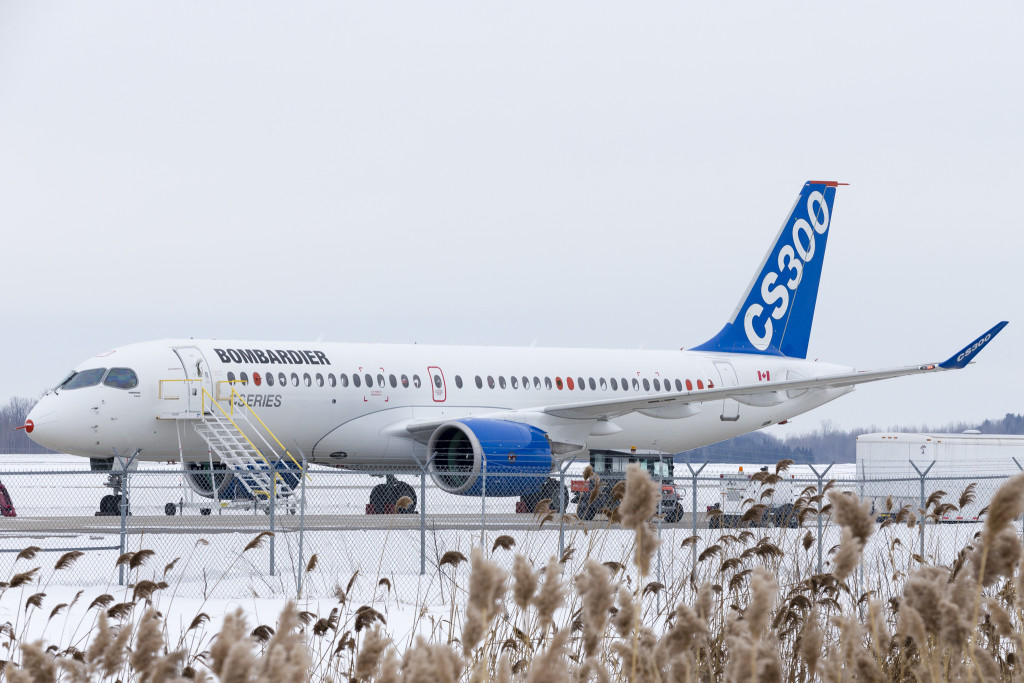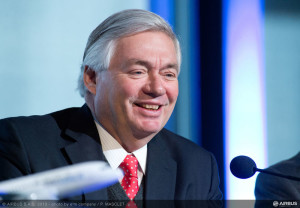Leeham News and Analysis
There's more to real news than a news release.
 Leeham News and Analysis
Leeham News and Analysis
- The Boeing 767 Cross Section, Part 1 November 24, 2022
- Movie Review: Devotion November 21, 2022
- China will accelerate development of its commercial aerospace sector November 21, 2022
- Bjorn’s Corner: Sustainable Air Transport. Part 46. eVTOL comparison with helicopter November 18, 2022
- The economics of a 787-9 and A330-900 at eight or nine abreast November 16, 2022
Pontifications: Earnings week for Airbus, Boeing, Bombardier and Embraer
April 25, 2016, © Leeham Co.: Airbus, Boeing, Bombardier and Embraer having their first quarter earnings call this week. Bombardier also has its Annual General Meeting concurrent with its 1Q earnings on Friday.
The big anticipation will be with Bombardier.
Earlier this month, The Wall Street Journal reported Delta Air Lines was going to order 75+50 C Series from BBD. Delta, on its 1Q earnings call, said it had nothing to announce but would have more to say at its investors day. This is May 16.
But at the same time, BBD postponed its AGM and 1Q call from the 28th to the 29th. Delta’s board of directors meets on the 28th. Previously, BBD postponed by one day its year-end earnings call to coincide with Air Canada, which announced an order for 45 C Series, plus options.
Is Bombardier’s rescheduling another harbinger of the Delta order, or will Delta hold off any announcement until that May 16 investors day?
Or could Delta announce the Bombardier order Friday and the widely reported, expected order for 30-37 Airbus A321ceos?
The world aviation geeks wonder.
Posted on April 25, 2016 by Scott Hamilton
Can Bombardier extend CS300 to a CS500? Part 3.
By Bjorn Fehrm
Subscription required
Introduction
April 25, 2016, ©. Leeham Co: We will now finish our series where we look into how big an undertaking a CS300 stretch to a 150 seater would be for Bombardier.
The C Series existing models, the CS100 and CS300, were designed with the CS300 as the main family member. That makes a stretch to a CS500 a pretty straight-forward job from a wing perspective, only minor adjustments are needed.
The problem area for the stretch is the fuselage. The C Series is a five abreast aircraft and at 150 seats the aircraft will have more than 30 seat rows. The resulting long fuselage limits the available rotation angle at takeoff.
Having discussed the different actions that can be taken to handle this problem in Part 2, we will now check the implications for the takeoff field length with our performance model. The model will also show if the engine takeoff thrust needs to be increased.
Finally, we will use the model to estimate the fuel consumption and the range of a CS500 derivative.
Summary
- A CS500 derivative made from the CS300 is a pretty straight-forward stretch project.
- Special care has to be taken with the risk for tails strikes from a longer fuselage.
- With the discussed actions in place, the field performance of a CS500 is still very good, even though it can’t compete with a CS300.
- The range would be less than a CS300 but the aircraft would still be capable of five hour missions.
- Fuel consumption would be higher per trip but lower per seat than a CS300. It would give existing 150 seaters strong competition on efficiency.
Posted on April 25, 2016 by Bjorn Fehrm
Pontifications: Airbus, Boeing, Bombardier and export credit support
April 18, 2016, © Leeham Co.: Export Credit for airliners was back in the news last week, with the US taking aim at the prospect of Canada’s agency supporting sales of the Bombardier C Series to the US and France and Germany suspending export credit support for Airbus airplanes.
The week before, Dennis Muilenburg, the CEO of The Boeing Co., testified before Congress that although the US ExIm Bank was reauthorized, Senate action—or more accurately, inaction—on confirming members of the ExIm Board of Directors has kept the agency shut down for new deals. There isn’t a quorum of members on the Board to approve new deals.
Posted on April 18, 2016 by Scott Hamilton
Can Bombardier extend CS300 to a CS500?
By Bjorn Fehrm
Subscription required
Introduction
April 14, 2016, ©. Leeham Co: Bombardier is working hard to get additional mainline airline customers for its C Series project. The latest discussion is whether Delta Air Lines would replace its fleet of Boeing MD-88s with the C Series.
In this context, it’s also discussed if the largest model, the CS300, Figure 1, is large enough for Delta. This aircraft seats 135 passengers in a two class configuration and up to 160 passengers in an all economy high density version.
The question is whether this is sufficient for Delta and other mainline customers, or if a still larger version is needed in the program, the oft-discussed CS500. We decided to use our proprietary aircraft model to see if a CS500 would be straight forward for Bombardier to develop, should Delta or any other customer ask for a three model C Series program.
Summary
- The C Series aircraft program was developed with the CS300 as the main model. The wing, engine and landing gear were dimensioned with the CS300 in mind.
- The CS100 is a shrink of the CS300, and not vice versa (the CS300 a stretch of the CS100).
- A tentative CS500 stretch if therefore a first stretch of the program’s main model and not a double stretch of a CS100.
- This is evident when one starts to analyze how a CS500 would be designed. There are rather modest changes that need to be done to create an extended model that seat up to 180 passengers.
Posted on April 14, 2016 by Bjorn Fehrm
Airbus, Boeing, Bombardier, Comac, CSeries, Delta Air Lines, E-Jet, Embraer, Irkut, Pratt & Whitney, Premium
737, 737 MAX, A320, A320NEO, Airbus, Boeing, Bombardier, C919, Comac, CSeries, E-Jet E2, Embraer, MC-21, Pratt & Whitney
Why Boeing won’t take a charge on 787s
Subscription Required
Introduction

Boeing 787-9. Source: Boeing.
April 11, 2016, © Leeham Co.: Boeing has $29bn in deferred production costs and another $3bn in deferred tooling costs for its 787. The accounting block, for its program accounting, is a record 1,300 aircraft. Many Wall Street analysts are skeptical whether Boeing will ever recover the huge deferred numbers.
Boeing insists it will.
Still, taking a charge of some number—as it has done twice for the 747-8 and twice for the 767-based KC-46A—is something Boeing repeatedly insists it doesn’t need to do.
Why not?
There are a few key reasons, say Wall Street analysts who follow Boeing: revenue, cash flow and the stock price.
Summary
- Bank of America Merrill Lynch estimates Boeing needs to post a profit of $30m on each of the remaining 900 787s to be delivered to recover the deferred costs. LNC figures this number is higher.
- Pricing pressure from Airbus makes it difficult to obtain this profit.
- The deferred costs limit Boeing’s ability to price down to meet Airbus’ offers to customers.
- Credit Suisse figures Boeing can recover only some $22bn of $29bn in deferred production costs.
- Boeing warns in SEC filings a forward loss might be required.
- But no forward loss is likely unless revenue falls short.
Posted on April 11, 2016 by Scott Hamilton
air force tanker, Airbus, Boeing, Bombardier, CSeries, Pacific Northwest Aerospace Alliance, Premium
747-8, 787, A330ceo, A330neo, A350-900, Airbus, Bank of America Merrill Lynch, Boeing, Credit Suisse, Dennis Muilenburg, Jim McNerney, KC-46A, Pacific Northwest Aerospace Alliance, Ray Conner, Richard Aboulafia, Rob Spingarn, Ron Epstein, Teal Group, The Seattle Times
C Series in Europe for route-proving
By Bjorn Fehrm
23 March 2016, ©. Leeham Co: Bombardier and Swiss International Airlines (SWISS) held a press conference in Zürich today at the conclusion of the C Series European route-proving. The route-proving on SWISS network was part of the final preparations ahead of an Entry Into Service (EIS) for CSeries with SWISS end of June.
The route-proving was done by Bombardier pilots with SWISS pilots as observers. SWISS service personnel conducting ground services for the aircraft under the supervision of Bombardier personnel.
We got an exclusive interview with Rob Dewar, Vice President C Series aircraft program, after the press conference. We discussed the progress with the C Series program and the result of the route-proving. Read more
Posted on March 24, 2016 by Bjorn Fehrm
Airbus needs more vertical integration, says official
Subscription Required
Introduction
March 3, 2016, © Leeham Co.: Airbus may well have avoided the supplier-driven delivery delays on its A350s had the company brought some key work in-house and become more vertically integrated, says its chief operating officer-customers.
Airbus has been bedeviled by delays in business class seat and galley deliveries from supplier Zodiac, resulting in delayed deliveries of the A350-900 to several airlines.
John Leahy, in an interview with LNC at the International Society for Aircraft Transport Trading (ISTAT) conference Feb. 29-March 1 in Phoenix (AZ), said Airbus shouldn’t be at the mercy of suppliers of interiors. His wide-ranging interview also touched on several other topics.
Summary
- Airbus should have become more vertically integrated 10 years ago.
- Basic supply chain solid.
- Speaks about PW GTF, CFM LEAP
- Airbus considering higher production rate on A320 than the announced 60/mo.
Posted on March 3, 2016 by Scott Hamilton
Airbus, Boeing, Bombardier, CFM, CSeries, ISTAT, Leeham News and Comment, Pratt & Whitney, Premium
737-7, 737-700, 787, A319, A320NEO, A330-900, A350, Airbus, Boeing, CFM, GTF, ISTAT, John Leahy, LEAP, Pratt & Whitney, Zodiac
ISTAT Day 1: Engine updates for CFM, GE, RR and PW
Feb. 29, 2016, (c) Leeham Co.: The LEAP engine, for the Boeing 737 MAX, Airbus ![]() A320neo and COMAC C919 is the fastest-selling engine in history, says Jean-Paul Ebanga, the president of CFM International. More than 10,000 have been sold.
A320neo and COMAC C919 is the fastest-selling engine in history, says Jean-Paul Ebanga, the president of CFM International. More than 10,000 have been sold.
- We’re at the 2016 ISTAT AGM in Phoenix and will be reporting today and tomorrow on presentations and news from the sidelines.
“It’s on-time and on-spec,” Ebanga said. It’s either been on the date set four years ago or ahead of schedule. The engines delivered to Airbus for the A320neo are on spec, he said. It’s been certified for the neo and will be certified soon for the MAX, with 90% of the information submitted.
Posted on February 29, 2016 by Scott Hamilton
Airbus, Boeing, Bombardier, CFM, Comac, CSeries, E-Jet, Embraer, Irkut, Mitsubishi, Rolls-Royce
737 MAX, A320NEO, Airbus, Bill Brown, Boeing, Bombardier, C919, CFM, Comac, CSeries, EJet E2, Embraer, GE Aviation, Irkut, Jean-Paul Ebanga, LEAP, MC-21, Mitsubishi, MRJ90, Rolls-Royce
In strategy shift, Boeing backs 7 MAX: sources
 Feb. 22, 2016, (c) Leeham Co. In a shift in strategy, Boeing is now fully backing development of the 737-7 MAX instead of urging the only two customers that have ordered the airplane to up-gauge to the MAX 8, sources tell LNC.
Feb. 22, 2016, (c) Leeham Co. In a shift in strategy, Boeing is now fully backing development of the 737-7 MAX instead of urging the only two customers that have ordered the airplane to up-gauge to the MAX 8, sources tell LNC.
Southwest Airlines and WestJet are the only two operating airlines for the 7 MAX. There is a third customer, a start-up in Canada that has yet to begin operations.
Sources have told LNC for months that Boeing really didn’t really want to build the 7 MAX, for which there are only 55 orders. But Southwest needs the airplane for short-runway airports like Chicago Midway and Burbank (CA) and has resisted suggestions to up-gauge, LNC is told.
All this changed when it looked like Bombardier might make a sale of its all-new CS100 to United Airlines, LNC is told.
Posted on February 22, 2016 by Scott Hamilton
Email Subscription
Twitter Updates
My TweetsAssociations
Aviation News-Commercial
Commentaries
Companies-Defense
Resources
YouTube
Archives
- November 2022
- October 2022
- September 2022
- August 2022
- July 2022
- June 2022
- May 2022
- April 2022
- March 2022
- February 2022
- January 2022
- December 2021
- November 2021
- October 2021
- September 2021
- August 2021
- July 2021
- June 2021
- May 2021
- April 2021
- March 2021
- February 2021
- January 2021
- December 2020
- November 2020
- October 2020
- September 2020
- August 2020
- July 2020
- June 2020
- May 2020
- April 2020
- March 2020
- February 2020
- January 2020
- December 2019
- November 2019
- October 2019
- September 2019
- August 2019
- July 2019
- June 2019
- May 2019
- April 2019
- March 2019
- February 2019
- January 2019
- December 2018
- November 2018
- October 2018
- September 2018
- August 2018
- July 2018
- June 2018
- May 2018
- April 2018
- March 2018
- February 2018
- January 2018
- December 2017
- November 2017
- October 2017
- September 2017
- August 2017
- July 2017
- June 2017
- May 2017
- April 2017
- March 2017
- February 2017
- January 2017
- December 2016
- November 2016
- October 2016
- September 2016
- August 2016
- July 2016
- June 2016
- May 2016
- April 2016
- March 2016
- February 2016
- January 2016
- December 2015
- November 2015
- October 2015
- September 2015
- August 2015
- July 2015
- June 2015
- May 2015
- April 2015
- March 2015
- February 2015
- January 2015
- December 2014
- November 2014
- October 2014
- September 2014
- August 2014
- July 2014
- June 2014
- May 2014
- April 2014
- March 2014
- February 2014
- January 2014
- December 2013
- November 2013
- October 2013
- September 2013
- August 2013
- July 2013
- June 2013
- May 2013
- April 2013
- March 2013
- February 2013
- January 2013
- December 2012
- November 2012
- October 2012
- September 2012
- August 2012
- July 2012
- June 2012
- May 2012
- April 2012
- March 2012
- February 2012
- January 2012
- December 2011
- November 2011
- October 2011
- September 2011
- August 2011
- July 2011
- June 2011
- May 2011
- April 2011
- March 2011
- February 2011
- January 2011
- December 2010
- November 2010
- October 2010
- September 2010
- August 2010
- July 2010
- June 2010
- May 2010
- April 2010
- March 2010
- February 2010
- January 2010
- December 2009
- November 2009
- October 2009
- September 2009
- August 2009
- July 2009
- June 2009
- May 2009
- April 2009
- March 2009
- February 2009
- January 2009
- December 2008
- November 2008
- October 2008
- September 2008
- August 2008
- July 2008
- June 2008
- May 2008
- April 2008
- March 2008
- February 2008





Bombardier’s Delta deal looking good, but don’t celebrate yet
Subscription Required
Introduction
Air Baltic will be the first operator of the Bombardier CS300. Source: Bombardier.
April 18, 2016, © Leeham Co.: Bombardier, if it didn’t dominate the news cycle in commercial aviation last week, must have come close. Consider:
While on balance, it seems likely Delta will order the C Series, Bombardier has been down this road before. Only a few months ago, the market and others were excited over the prospect that BBD was close to landing an order from United Airlines, only to see Boeing swoop in and grab the deal.
Summary
Read more
Leave a Comment
Posted on April 18, 2016 by Scott Hamilton
Airbus, Airlines, Boeing, Bombardier, CSeries, Delta Air Lines, E-Jet, Embraer, Leeham News and Comment, Premium, United Airlines
737-700, A319, A321ceo, Air Canada, Airbus, Boeing, Bombardier, C Series, CS100, CS300, Delta Air Lines, E195 E2, E195-E1, Embraer, United Airlines